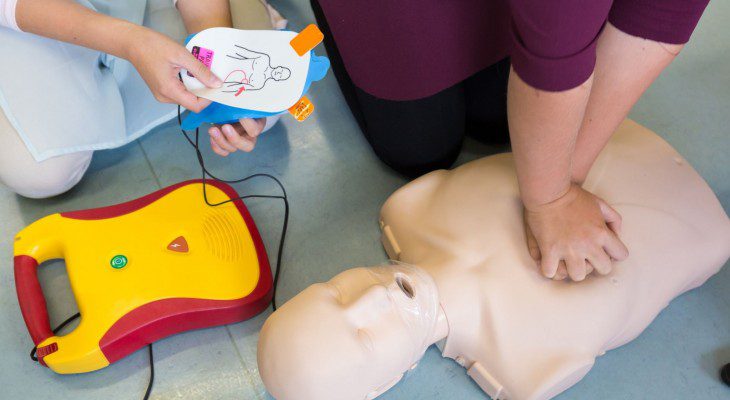Sudden cardiac arrest: Common mistakes in school AED programs
Blog Excerpt: Learning how to use an AED is extremely important in case someone goes into sudden cardiac arrest. Discover some common mistakes to avoid.
Common Mistakes in School AED Programs
An AED, or automated external defibrillator, is something that most people can learn to use, even if you don’t have a medical background. Everyone from school educators to elderly caretakers can use this device to help those at risk of going into sudden cardiac arrest.
It’s essential to implement a structured AED program at your school and make sure all faculty members are properly trained. The following is a list of common mistakes found in school AED programs that you’ll want to avoid.
Not Enough AEDs on Hand
It may seem odd to want several AEDs within a building. After all, you only need one for a patient. However, the issue does not derive from how many a person needs to survive but rather how fast you can get it to them. One of the most common mistakes school programs make is not having enough AEDs within the respective floor/building. According to the American Heart Association, defibrillation must begin on a person within three to five minutes of collapse. This can be difficult if the nearest AED is located several floors away.
Overlooking the Emotional Aspect of the Process
Another common mistake is not considering the emotional aspect of performing defibrillation on a person. When training, there is no screaming, crying, or risk of losing the patient, and thus, the person using the AED is often relaxed. That is why school programs should attempt to emulate a real-world scenario in which people do begin to panic when training. This helps to mentally prepare those involved.
No Extra Accessories
The fact of the matter is that an AED is not the only medical tool a patient is going to require. When preparing to use an AED on a person, there will be obstacles in the way. Things such as clothing and even chest hair can get in the way of starting the process. Consider including additional accessories as part of your school’s AED program and training. These items may include shaving razors, scissors, and masks, to name a few.
If you are a staff member at a school with an AED program or planning to implement one, it is incredibly important to look out for these mistakes. Failure to do so can lead to a very costly error when a real-world scenario occurs.
Disclaimer: The information posted on this page is for educational purposes only. If you need medical advice or help with a diagnosis, contact your medical professional.


